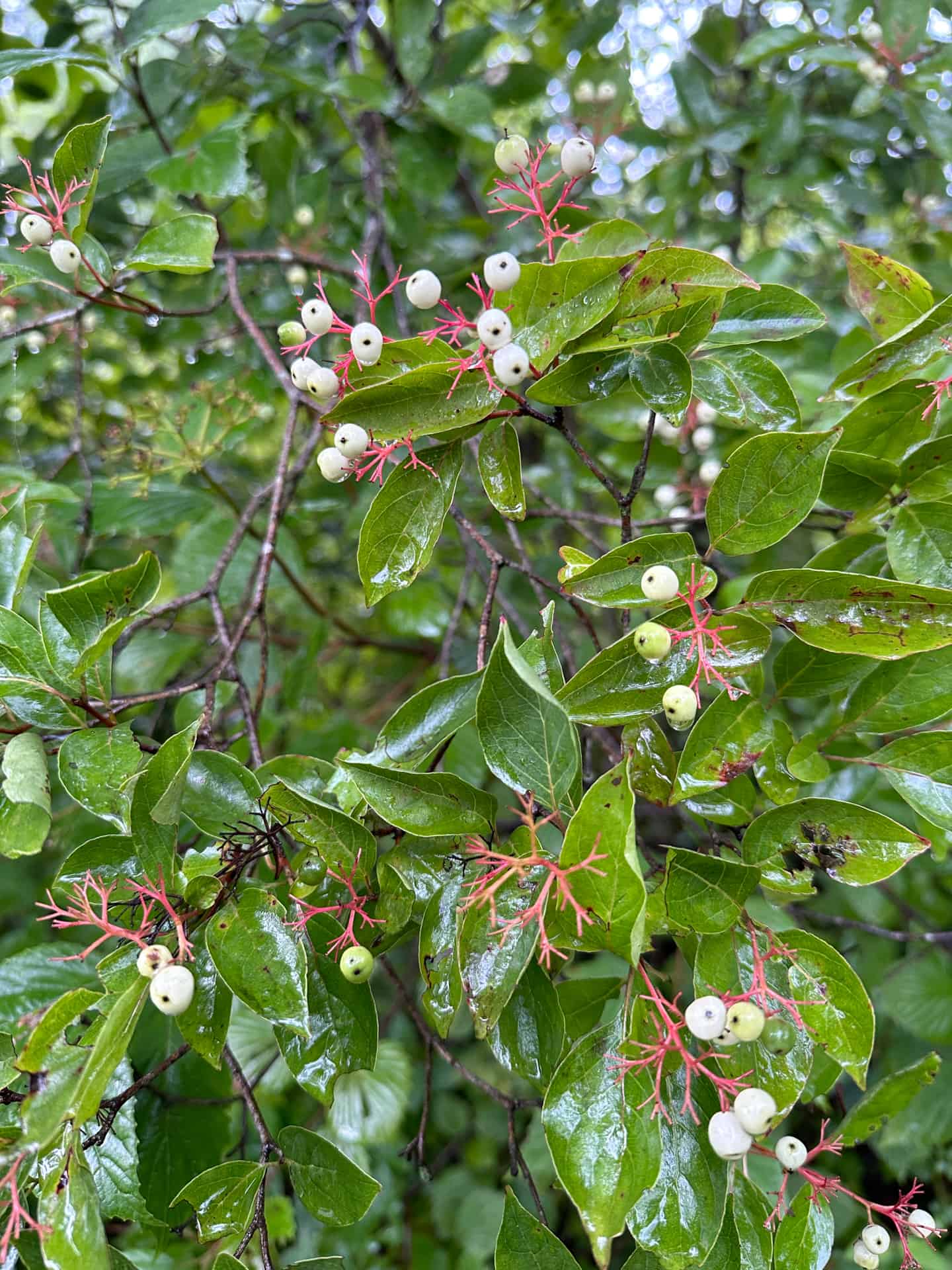Crow’s Nest: Plants we love August 2023
By Daniel Barringer, Preserve Manager.
There’s no shortage of plants I love, but here are a few that are making me happy as I walk the preserve this month:

Photo: Daniel Barringer
The pale fruit of gray dogwood (Cornus racemosa) stand out against their red petioles—the stalks which hold them. This informal shrub grows in wetlands and is also called swamp dogwood. You can find stands of it along French Creek, and along Piersol Road down the hill from the Chief’s Grove. It grows among Joe-Pye weed, New York ironweed, jewelweed (none of these are actually weeds), and winterberry holly.

Photo: Daniel Barringer
Nearby, but also occasionally throughout meadows on the preserve, you will find one of our native thistles, appropriately but not distinctively called field thistle (Cirsium discolor). Probably all thistles grow in fields, and we are much more familiar with those that are highly invasive non-natives that are also legally-designated noxious weeds. But this biennial thistle is not aggressive here and bees, butterflies, and hummingbirds collect the nectar and finches and other wildlife feed on the seeds.

Photo: Daniel Barringer
In the same area near the entrance to the fields used by the farmer’s tractors, you will see the fruit of American plum, (Prunus americana). We’re pretty sure that these are wild populations, not descendants of varieties cultivated for improved fruit or tree form, and the Pennsylvania Game Commission has been propagating our plants for a couple years to make seedlings available for for people to plant for wildlife.

Photo: Daniel Barringer
And in the pond at Warwick Woods, where we have been removing the invasive giant reed (Phragmites australis) there is a population of duck potato, or broadleaf arrowhead (Sagitaria latifolia). These leaves aren’t particularly broad compared to some, but neither are they as narrow as the related lanceleaf arrowhead (S. lancifolia). It’s for the protection of a diversity of native plants such as these that we manage the invasive ones. Enjoy!
